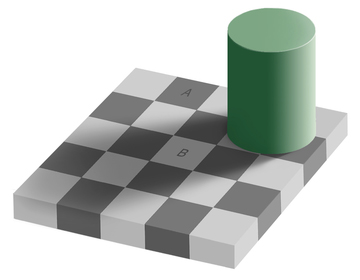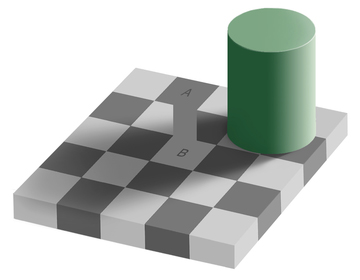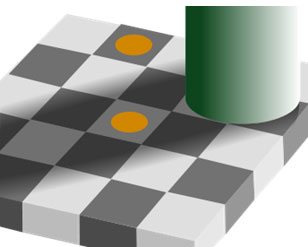Look at the drawing below. Which square is darker, square A or square B?

Incredibly, the answer is that squares A and B are the same color, but your brain’s perception of them being different is based on the surrounding color and shadow information. What’s amazing about this illusion, is that even after you learn that the 2 squares are the same color, your brain continues to perceive square A as significantly darker than square B. This proof drawing helps your brain believe what your eyes aren’t seeing:

Why can’t we see the colors as they actually are, even after we’ve been told, and shown, that they’re the same? It largely has to do with our brain’s ability to interpret a 2-D drawing as a 3-D representation. We expect the cylinder to cast a shadow on the checkerboard- and because we are used to compensating for shadows in “real life” we perceive and compensate for the shadow we assume has been created by the cylinder. However, the creator of the image has manipulated the colors and the shadow to give the illusion of the shadow–without there actually being a realistically rendered or predictable shadow. In addition, because we interpret a checkerboard pattern in an expected way (alternating light and dark squares), due to the respective positions of squares A and B, our brains automatically categorize square A as a dark square and square B as a light square, despite their actual color.
Here is another variation on Adelson’s illusion, which is also called the Checker Shadow illusion.

In this drawing, the bottom circle appears to be light orange, while the top circle appears to be brown. Of course, they are actually identical in color, just like the gray checkerboard squares.
